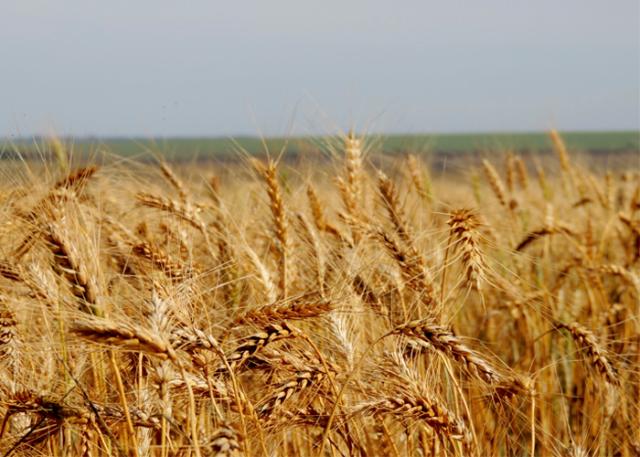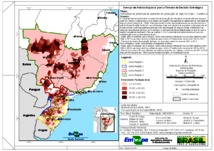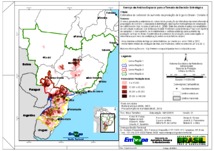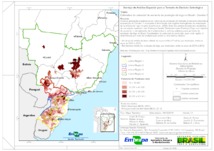Brazil is capable of producing beyond the domestic demand for wheat
Brazil is capable of producing beyond the domestic demand for wheat
The main ingredient for bread can be abundantly produced in Brazil. In the Brazilian Midwest alone, new frontiers for wheat could result in 24.9 million tons of the cereal, a volume that represents twice the current domestic consumption. This would make the country change from wheat importer to exporter. This was one of the findings from a study conducted by researchers from Embrapa Wheat and Embrapa Territorial Management, which projected four different scenarios for national wheat production considering regions to which the crop could be expanded.
Brazil produces approximately half of the 11 million tons of wheat that it consumes, and 70% of such total is destined to baking goods, which entails the results are strategic to outline alternatives for the supply of the cereal. "It is important that the country learns about its production potential to delineate and map alternatives to wheat imports", stresses the researcher Cláudio Spadotto, general manager of Embrapa Territorial Management.
The country imports between five and six million tons of wheat every year, mainly from Argentina, favored by the bilateral agreements of the Southern Cone Common Market (Mercosur). "I believe that Brazil is fully capable of becoming self-sufficient in wheat. We can count on technology and area, but it is fundamental to have the support of public policy to ensure production growth", argues the general head of Embrapa Wheat, the researcher Sergio Dotto.
In 2015, Brazil cultivated 2.5 million hectares with wheat, a production of 5.5 million tons. In terms of territorial distribution in the country, the South accounts for about 89% of the produced total, the Southeast, for 9%, and the Midwest, for 2%. According to the Embrapa Territorial Management analyst Rafael Mingoti, the differentiation in production is strongly conditioned by the soil and weather characteristics of the territory, the existence of cultivars that are adapted to such characteristics, and the existence of mills and grain storage facilities. "Recognizing and to analyzing such differences will inform the elaboration of public policy aimes at fostering wheat crops in Brazil", Mingoti asserts.
Regionalization of production
For development of the study, the wheat production areas were divided into four homogeneous regions that were defined based on the variables: rainfall, cold and heat at specific moments of growth, altitude, and description of grain yield.
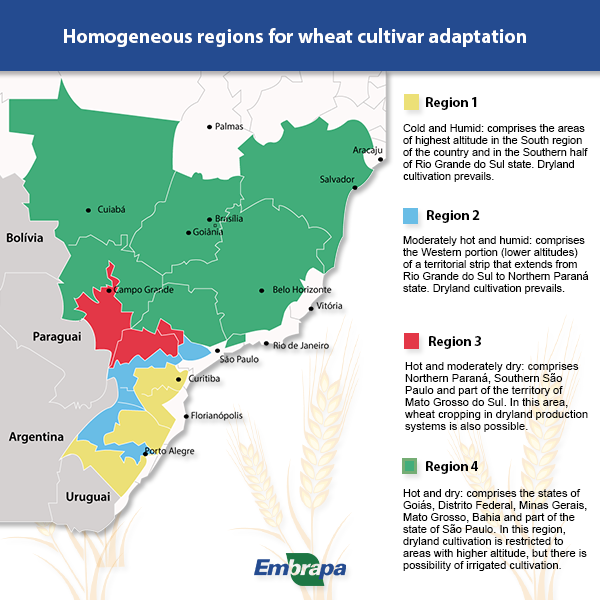
Scenarios
The projected expansion in wheat crop area, considering all the homogeneous regions, was estimated from scenarios based on combinations of factors such as crop area in the summer (soybean and maize), areas that are suited for winter cultivation, and optimization of areas that have already historically been occupied by wheat.
The estimate was based on the average yield, production volume, and the area harvested in the 2010-2012 period in each region. As region 4 presents both production in dryland and in irrigated systems, the estimate considered the average dryland wheat yield, per state, in the period from 2011 to 2013, resulting in 2,400 kg/ha.
As a result, four possible scenarios were developed. Scenario 1 projects that wheat can occupy 1/3 of the soybean and maize area (summer 1st harvest) in the winter. Production potential: 14 million tons of wheat. JIn turn, Scenario 2 considers that the cereal takes up 10% of the area with soybean and maize crops in the summer (1st harvest). Potential: 5.9 million tons. Scenario 3 repeats the results of the historically maximum wheat production for each city region of the country between the years of 1990 and 2012. Potential: 11.3 million tons.
Finally, Scenario 4 traces a combination between scenarios 1 and 3, adopting the biggest figure obtained in each: the production deriving from 1/3 of the soybean and maize area or the historical production in cities. Deemed the most optimistic, Scenario 4 shows a production potential of 22 million tons of wheat.
In another analysis, for Region 4 the study considered the areas with altitude above 800m and with declivity lower than 12%; in a general outlook, that is the region where wheat finds most room for growth in Brazil, with a potential of almost 25 million hectares. Currently, there are wheat crops in only 200,000 hectares in the Brazilian Midwest and Southeast regions, besides those in the state of Bahia.
The study also demonstrated that the potential areas for increased wheat production in Region 4 are concentrated in specific locations within Brazilian states, especially Eastern Goiás, Western Bahia, East and South of Minas Gerais, and, to a lesser extent, Southern Goiás, Northern Minas Gerais and mid-Bahia.
According to Mingoti, the results indicate that public policy can act in traditional wheat production regions in an attempt to minimize time variations, in order to obtain higher quality and to rehabilitate wheat production areas that are either in decline or stagnated today despite having once offered significant contributions in the past. "Planning and investment in the optimization of the logistics of wheat outflow towards the largest consumer centers of the country with suitable quality are fundamental to ensure the economic competitiveness of the national product against the imported one", affirms the analyst.
Translation: Mariana de Lima Medeiros
Joseani M. Antunes (MTb 9396/RS)
Embrapa Wheat
Press inquiries
trigo.imprensa@embrapa.br
Phone number: (54) 3316-5800
Embrapa Territorial Management
Press inquiries
gestao-territorial.nco@embrapa.br
Phone number: (19) 3211-6200 ramal 6438
Fábio Reynol (MTb 30.269/SP)
Embrapa's Secretariat of Communications
Further information on the topic
Citizen Attention Service (SAC)
www.embrapa.br/contact-us/sac/

